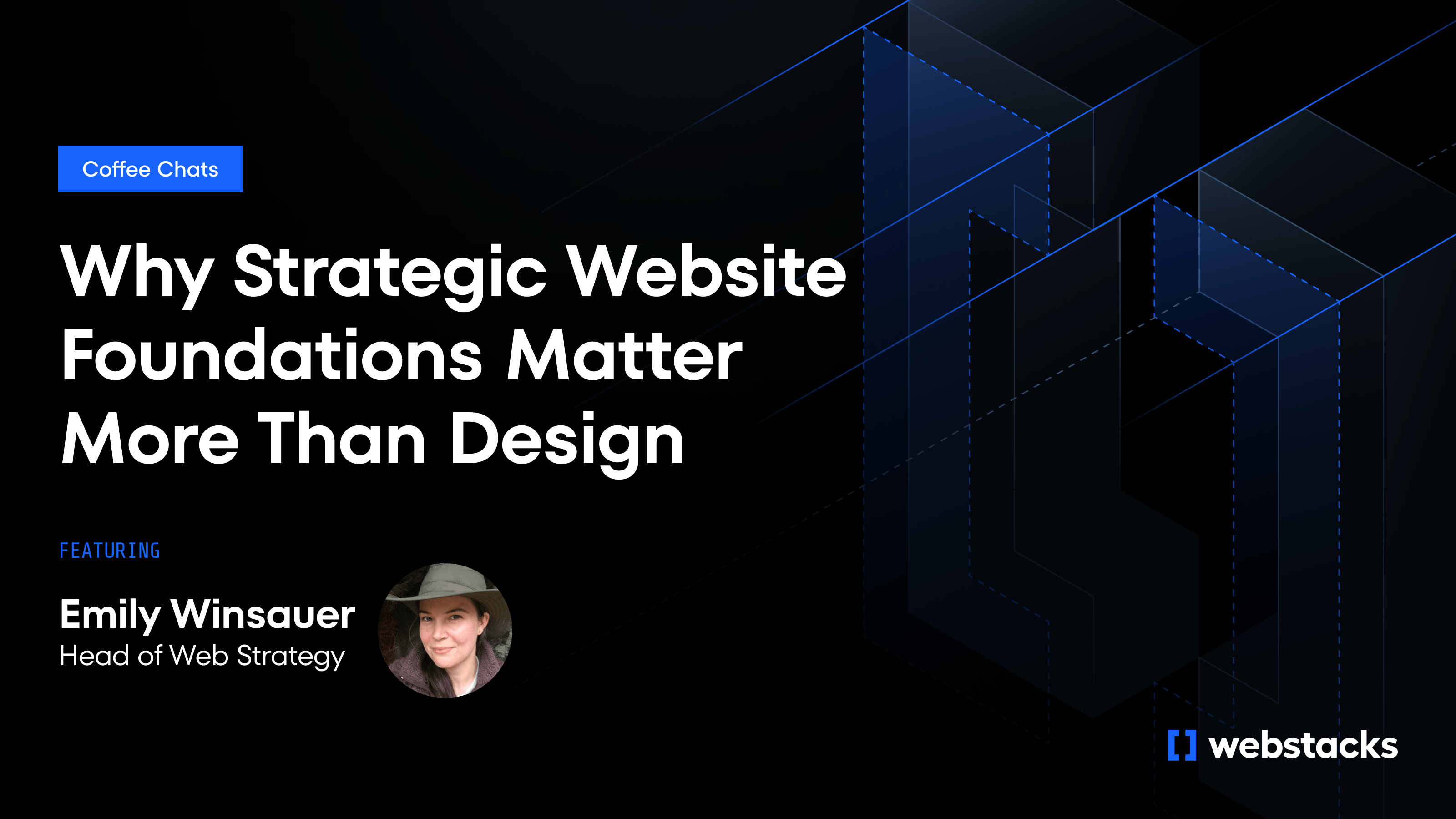Composable architecture is a different way to think about building digital systems. Instead of one tightly connected structure, it’s made up of smaller parts—each handling a specific task, each replaceable without breaking the whole. These parts connect through APIs, giving you the freedom to change direction fast without rebuilding from scratch.
For B2B teams, a composable architecture means you’re not locked into outdated systems or limited by vendor roadmaps. You control what tools you use, how they fit together, and how quickly you can respond when customer needs shift or markets change.

What Are the Main Principles of Composable Architecture?
Composable architecture is a modular approach to building digital systems where independent, API-connected components can be developed, deployed, and scaled separately.
It represents more than just technology implementation. It's a philosophy built on principles that create flexibility:
- Modularity: Breaks systems into self-contained blocks, each responsible for a specific function. These blocks can be rearranged or swapped as needs evolve.
- Autonomy: Each component operates independently, with minimal dependencies. It allows for isolated changes, independent scaling, and faster iteration.
- Orchestration: A coordination layer connects independent parts, handling workflows and data flow without tightly coupling the system.
- Discoverability: Emphasizes API-first design so components are easy to locate, understand, and reuse.
- MACH Architecture: Follows a modern framework built on Microservices, API-first communication, Cloud-native infrastructure, and Headless design, allowing teams to build with best-in-class tools.
What Are the Benefits of Composable Architecture for B2B Organizations?
Composable architecture offers powerful benefits for B2B organizations:
Strategic Agility
In B2B, business moves faster than most tech stacks can handle. Whether you’re launching a new product or entering a new market, composable architecture lets you move without waiting on large-scale development cycles.
Teams can roll out changes to one part of the system without affecting others. This removes the usual bottlenecks between marketing, product, and engineering.
When every module runs independently, updates become quicker and less risky. The speed gives you room to test and stay aligned with shifting business priorities.
Scale Where It’s Needed
B2B growth isn’t uniform. A single product line might spike in usage while others remain flat. Traditional platforms force you to scale the whole system, which is expensive and inefficient.
With composable architecture, you can scale individual modules based on actual usage. For example, your billing tool or order form can handle increased load without dragging along the rest of the site.
This approach gives you better control over infrastructure and spending, and helps avoid performance issues that slow down users in high-demand areas.
Reuse Components to Avoid Rebuilding Work
When different departments need similar tools (calculators, pricing engines, or forms) teams often rebuild the same things in slightly different ways. Composable systems solve this by turning those tools into shared components.
You build them once and plug them into different parts of the site. It saves time and reduces bugs. Everyone uses the same logic, which improves consistency and avoids duplicate effort.
Over time, it also makes onboarding new teams and launching new projects faster and less painful.
Control the System Without Slowing Teams Down
You need to follow branding rules, enforce legal standards, and avoid introducing risk. But too much control often slows down teams. A composable setup gives you a better balance.
You can lock down critical components such as pricing blocks or data collection forms, while letting teams customize the rest. It keeps your brand and compliance intact without blocking teams from building what they need.
Consistent Results
B2B buyers interact with your business across many channels. A composable backend gives all of them access to the same data and logic, so you don’t have to manage separate versions for each one.
But that doesn’t mean every experience looks the same.
Each channel can tailor the frontend for its users, while still pulling from the same source.

Real-World Use Case of Composable Architecture
Composable architecture has proven its value in numerous B2B scenarios, transforming how organizations deliver digital experiences.
Enabling Agile Digital Strategy in Fintech
Circle, a global fintech company in the crypto space, needed a faster and more flexible marketing platform to keep pace with the evolving Web3 industry. Their legacy content system was fragmented and heavily reliant on engineering resources, slowing down the launch of new campaigns and product pages.
Webstacks migrated Circle’s marketing site to HubSpot CMS, introducing a modular design system built on reusable components. This gave the marketing team full autonomy to create and update content without developer support. Circle could now deploy blog posts, product pages, podcasts, and legal content at speed, all from one centralized platform.
To support business units like Centre and Verite, the Webstacks team embedded agile processes into Circle’s workflows. One-week sprints, sprint planning, and flexible resource allocation enabled Circle to shift priorities quickly and roll out new stakeholder-driven pages—without disrupting their core operations.
How to Implement Composable Architecture
Transitioning to a composable architecture requires strategic planning:
- Assessment: Map your current system to identify modularization opportunities. Prioritize based on business impact and technical feasibility.
- Planning: Create a phased transition roadmap balancing quick wins with long-term goals. Define clear APIs and integration patterns to connect your components.
- Integration: Implement an API gateway or integration layer for communication between new composable components and existing systems. This creates a bridge allowing gradual migration without business disruption.
- Testing: Test each component individually and as part of the integrated system. Composable architecture needs robust automated testing to confirm components work together despite their independence.
- Deployment: Roll out changes incrementally, starting with lower-risk components. Use feature flags and canary deployments to validate new components with limited user groups before full release.
Best Practices for Adopting Composable Architecture
- Start small: Begin with defined, high-value components rather than a complete system overhaul.
- Collaborate across disciplines: Form cross-functional teams including business stakeholders, developers, and operations staff. This ensures components align with business needs and meet technical requirements for modularity and interoperability.
- Monitor and iterate: Set clear metrics to evaluate component performance and system health. Use this data to continuously refine your architecture, replacing or enhancing components as business needs evolve and new technologies emerge.
Common Challenges and How to Resolve Them
Organizations shifting to composable architecture often face internal resistance—not just technical, but cultural. Teams may be used to working within rigid systems and hesitate to adopt new workflows.
The best way to overcome this is by demonstrating early wins.
Show how modularity speeds up deployment, reduces system-wide failures, and empowers teams to work more independently. Tangible results build buy-in.
Another major hurdle is technical debt. Many legacy systems are tangled with tightly coupled dependencies that make change risky. To navigate this, teams often use the strangler pattern—gradually replacing parts of the legacy system with composable components.
As composable systems grow, integration complexity becomes a real concern. Managing dozens of independent services means you need strong standards in place. Clear API guidelines, API management platforms, and a documented service catalog can help teams understand how components interact and what each one expects.
Finally, skill gaps can slow adoption. Composable architecture relies on knowledge of APIs, microservices, and cloud-native infrastructure—areas where many traditional teams may lack experience. You can bridge this gap through focused hiring, internal training, or by partnering with vendors such as Webstacks who specialize in composable systems.
Composable Is the New Standard
Composable architecture gives B2B companies the flexibility to build smarter and stay ahead.
With modular components, you can scale what works, fix what doesn’t, and launch new ideas without hitting roadblocks. It’s a more resilient, adaptable way to build, and it puts your team in control.
If your current setup is slowing you down, composable architecture offers a clear path forward. And the sooner you start, the faster you move.




